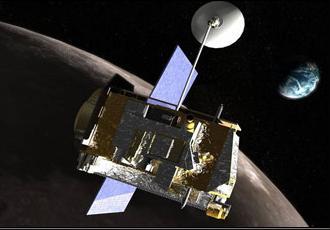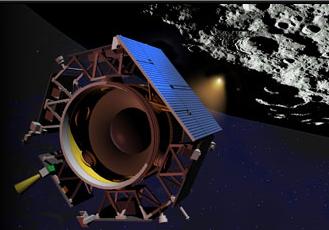The list of instruments on board LRO includes seven instruments from all over the world, including one donated by the Space Research Institute in Moscow. These devices will return to Earth images, topographic measurements, temperatures and more. The LCROSS spacecraft that will travel with it to the moon will launch a missile that will hit the moon, measure the composition of the plume when it flies inside it, and crash on the lunar surface

NASA's return to the moon will get a boost next week with the launch of two satellites that will return a wealth of data about Earth's neighbor. On June 17, NASA will launch the Lunar Rover (LRO) and the Crater Exploration Satellite (LCROSS). The two spacecraft will be launched together on an Atlas 5 rocket from the Cape Canaveral air force base.
The main purpose of LRO is to conduct investigations in preparation for further manned and unmanned exploration of the Moon. In particular, LRO will look for safe and interesting landing sites, locate potential resources at important sites with an emphasis on the possibility of discovering water ice, and characterize the effects of long exposure to radiation on the lunar surface. In addition to its discovery mission, LRO will also transmit rich scientific information that will help us better understand the topography and composition of the Moon.
LRO will use seven instruments to identify safe landing sites for future manned missions, locate potential resources, characterize the radiation environment and test new technologies. LCROSS, on the other hand, will use the second stage of the Atlas-Centaur rocket in an unconventional way and combine two spectacular crashes on the lunar surface.
"These two missions will provide exciting and important information about the moon, our closest neighbor," says Doug Cook, deputy director of NASA's Mission Directorate at the agency's headquarters in Washington. "Detailed photography will show the dramatic views and areas of interest at a resolution of one meter. The data will provide information about new uses of the moon. These teams did an excellent job designing and building both spacecraft.
LRO's instruments will help scientists produce high-resolution three-dimensional maps of the lunar surface as well as survey the lunar surface in the ultraviolet frequencies. The satellite instruments will help to explain how the harsh radiation environment of the sun absorbed on the surface of the moon affects humans, and will measure the radiation absorption using plastic tissues that simulate human tissues. The instruments will also allow scientists to photograph the moon's deepest craters, and to look below the surface to look for clues about the location of water ice blocks, and to identify areas that are well lit (for placing solar collectors) and well shaded (for ice detection). High-resolution imaging from the spacecraft's camera will make it possible to identify landing sites and characterize the topography and composition of the moon. A miniature radar will photograph the poles and allow a test of the system's communication capabilities.
"LRO is an extremely sophisticated spacecraft," says Craig Tully, LRO project manager at NASA's Goddard Space Center in Maryland. "The set of devices on which they will work in coordination to send us data in areas where we have been hungry for information for years."

Together with LRO, a spacecraft will also be launched for the observation and sensing of the craters Lunar CRater Observation and Sensing Satellite (LCROSS). This mission, to search for water ice in the lunar craters, will be carried out by launching a rocket the size of an all-terrain vehicle into a crater that is in permanent shadow in the polar region. LCROSS will fly into the dust plume left by the rocket after its impact and take measurements of its properties before crashing into the lunar surface.
While most Centaur rockets finish their work after accelerating their payload outside Earth's orbit, the Centaur that will drive LCROSS will travel alongside the spacecraft for four months and be guided to hit a permanently shadowed crater at one of the Moon's poles. The plume of fragments is expected to reach a height of about ten kilometers.
The plume will be a dynamic observation target for LCROSS, for LRO itself as well as for a network of ground telescopes, and possibly also for the Hubble Space Telescope. Observers will look for evidence of water ice by observing the plume in direct sunlight. LCROSS will increase our knowledge of the mineralogy and composition of some of the most distant craters that sunlight never reaches. The satellites represent a new generation of cheap missions designed and built in rapid development, and which use equipment that has already gained flight experience and off-the-shelf software to achieve the targeted operational goals.
"We expect a wide range of public involvement when LCROSS reaches the Moon and searches for ice," said LCROSS Project Manager Dan Andrews of NASA's Ames Center at Moft Field in California. "We may be able to learn something about one of the best-kept secrets of planetary science."
LRO and LCROSS are the first missions launched under NASA's Mission Administration. Their data will be used to achieve the goals of continued human activity in the solar system. LRO will spend at least a year in low orbit around the moon, collecting probes for landing on its surface before being transferred to NASA's Science Mission Administration for continued scientific data collection.

9 תגובות
Yaniv:
What you said is the mistake I was referring to.
will open:
I don't know why you think the father and son have to have oxygen masks.
The painter's idea was that they are standing on Earth where oxygen masks are not needed, and the "star" in the background is the moon.
Of course he got confused and between us - the waning of the moon has no artistic value.
Of course it could be argued that they are not on Earth but on another planet that has no atmosphere.
In that case the lighting could work but then - if they are not aliens - they would need space suits.
Everyone:
Even on Earth it is possible (rarely) to see a crescent moon with an upward inclination.
Who knows when and how I know that this is not the current painting?
This is an artistic cover, it shouldn't make sense, the father and son too without oxygen masks...
According to the lighting on the star in the background... the viewer should be during the day and not at night as depicted.
It would be true if the star in the background was upside down...
Maybe:
That was not my intention but to make sure there is no misunderstanding between us I would like to ask you why you claim that the scouts are on the moon?
Seeing the moon... from the moon?
Well?
No one sees?
In issue 3 of Odyssey there is a funny mistake on the cover.
Do you see what it is?
http://www.odyssey.org.il/articles.html
Nothing to add but cool!